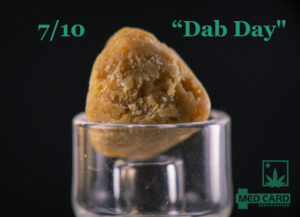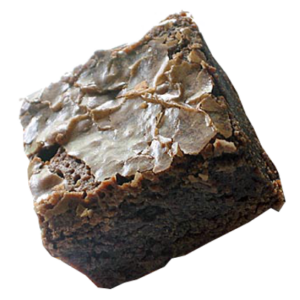Discover THCP: A Potent Cannabinoid Found in Cannabis
- Discovered in 2019, THCP and CBDP are rare cannabinoids produced in cannabis.
- There is debate as to how THCP contributes to the effects of marijuana.
- The presence of THCP may modulate the effects of THC.
- More research needs to be done to determine the safety and efficacy of THCP.
Look out THC. There’s a new cannabinoid on the block. Recently isolated from marijuana by a team of Italian scientists in a UNIHEMP research project, it’s called delta-9 tetrahydrocannabiphorol. That’s quite a mouthful. We’ll just call it THCP.
I What is a cannabinoid?
The term phytocannabinoid refers specifically to cannabinoid molecules derived from plants. These naturally occurring molecules are found in a variety of plant species such as cannabis and echinacea. The cannabis plant is believed to contain the highest phytocannabinoid content of all plant species.
Endocannabinoids are naturally produced by the body within the human endocannabinoid system or ECS. The ECS is a complex biological system of cannabinoid receptors on the surface of cells throughout the nervous system including the brain.
When phytocannabinoids interact with these receptors they produce similar effects to endocannabinoids.
The study of phytocannabinoids
The U.S. has put up multiple barriers impeding much-needed research into THCP and other cannabinoids. One of the challenges is that cannabis is still categorized as a Schedule I controlled substance on a federal level. There are, however a handful of federally-funded studies into the safety and efficacy of THCP taking place in Canada, Europe, and Israel.
In recent years, research has enabled the discovery of almost 150 phytocannabinoids in the cannabis plant. Because most strains of cannabis tend to be THC or CBD-dominant, the isolation and study of minor cannabinoids has been challenging.
However, the use of state-of-the-art spectrometry has been a game-changer when it comes to analyzing and identifying some of the more rare cannabis compounds.
The discovery of THCP
The UNIHEMP project, sponsored by the European Regional Development Fund essentially enabled the discovery of THCP in late 2019. The Italian research group responsible for the discovery of the newly discovered cannabinoid was led by Reggio Emilia who teamed up with Guiseppe Cannazza of the University of Modena.
This industrious team, using advanced profiling techniques successfully identified two new minor cannabinoids — THCB and CBDB — within the last year. Ultimately, the research was able to shine a light on the role of THCP including its vital interactions and effects on other cannabinoids.
The group studied a medicinal cannabis cultivar, FM2, supplied by the Military Chemical-Pharmaceutical Institute in Florence. They were able to successfully isolate the new cannabinoids THCP and CBDP using a variety of characterization techniques.
The scientists then managed to artificially synthesize both cannabinoids to create reference materials. These artificial versions were then utilized to verify the natural expression of THCP and CBDP in the FM2 cultivar.
What are the effects of THCP?
The scientists were led to believe that THCP may be responsible for the variability of patient responses in clinical cannabis trials. These variables were apparent even when cultivars with equal THC levels were administered to the participants in identical doses.
Researchers concluded that the psychotropic effects attributed to THC may indeed be due to the presence of THCP. Additionally, the team posits that even when applied at lower doses THCP may have stronger psychotropic effects than delta-9 THC.
The THCP compound was used in an in vitro experiment with cultured cells to test the binding affinity of THCP with CB1 and CB2 endocannabinoid receptors. The results indicated when compared to older data on other cannabinoids that THCP is 33 times more active than delta-9 THC in its affinity to bind to the CB1 receptor.
Dr. Cecilia J. Hillard (Medical College of Wisconsin) was compelled to weigh in on the groundbreaking research and stated:
“I think it is well designed. The study has two important gaps, in my opinion. First, they should have compared the in vivo effects of THCP to that of THC ‘head to head’ so that relative potencies could be assessed. Second, I would like to know whether THCP has greater efficacy to activate the [CB1 receptor] in particular. THC is relatively safe because it has low efficacy at the receptor. If THCP has high efficacy (like the synthetic analogs that have also increased the tail length), it is a more concerning finding, as it would suggest that strains making a lot of THCP could be more dangerous to use than those that do not. So, my issue is that we do not know yet whether THCP is like THC, a partial agonist, or like the synthetic compounds, a full agonist. And my concern is that, if it is the latter, cannabis strains high in THCP will have more adverse effects than those that are low.”
Another prominent scientist concurs with Dr. Hillard and heartily disagrees with the group’s assessment that THCP is responsible for the variability of psychotropic effects in various cultivars. Hillard concludes that:
“While this possibility cannot be ruled out, the known potency differences for THC and THCP at cannabinoid receptors is relatively small, while the difference in abundance of each in cannabis is enormous. The same is true of CBD and CBDP, although CBD requires even higher doses to achieve many of its pharmacological effects. For this reason, I do not feel that minor or trace phytocannabinoids like THCP or CBDP contribute significantly to the psychoactive effects of different cannabis strains.”
More THCP research is needed
Sadly, the U.S. is lagging far behind other countries when it comes to the study of THCP and other cannabinoids. This newly discovered, novel cannabinoid may be a vital component in comprehending the full medicinal value inherent in the cannabis plant.
Hopefully, as legal restraints are loosened, the powers-that-be will recognize the importance of clinical cannabis studies and will initiate further research.







